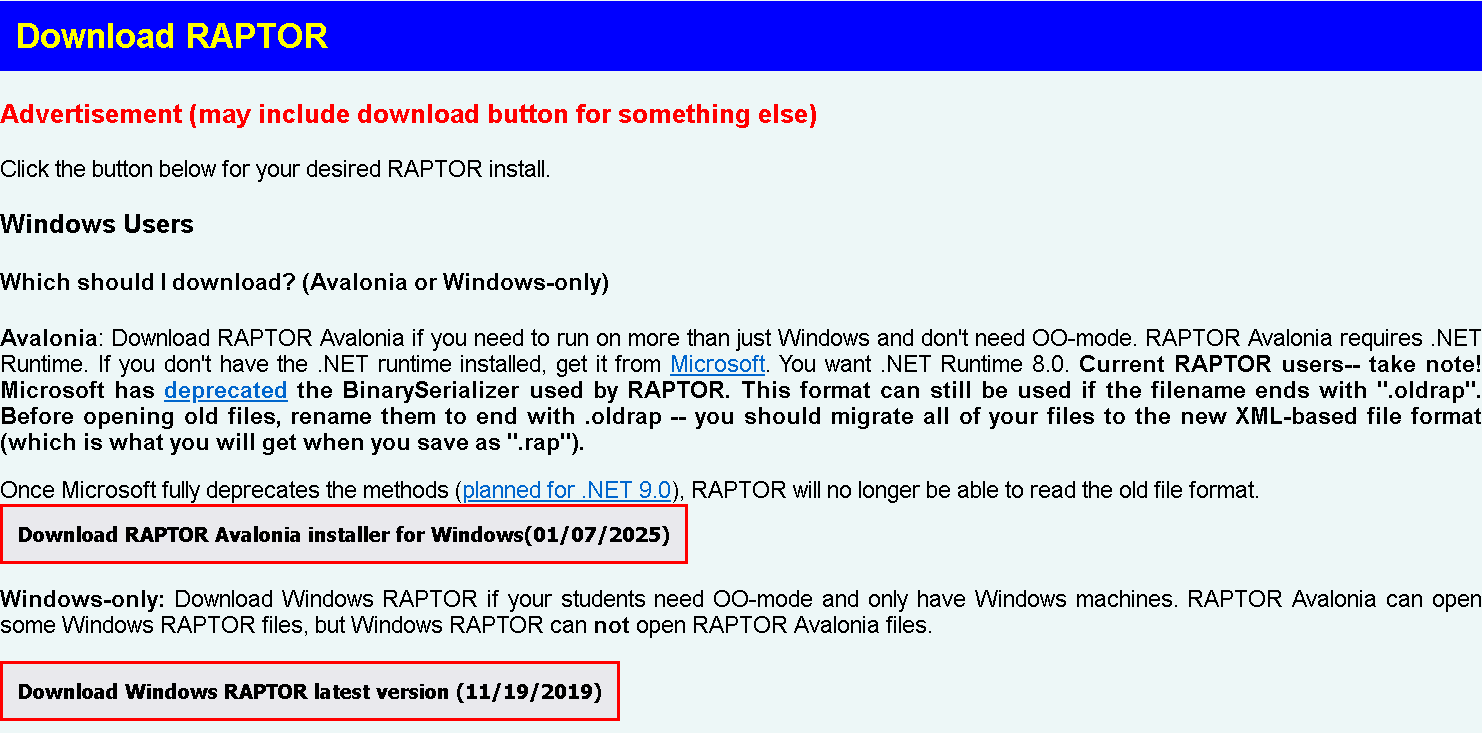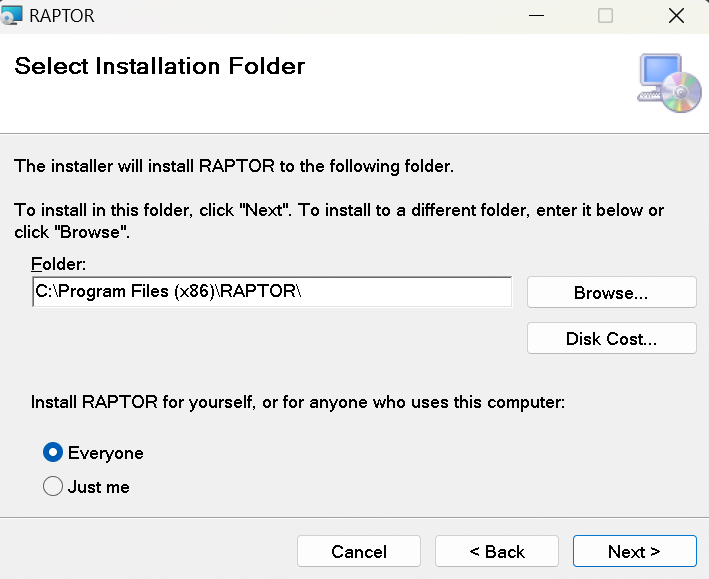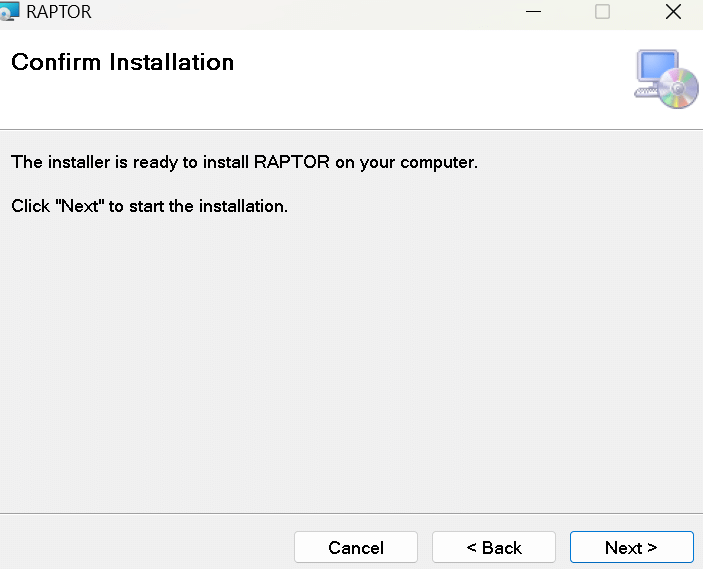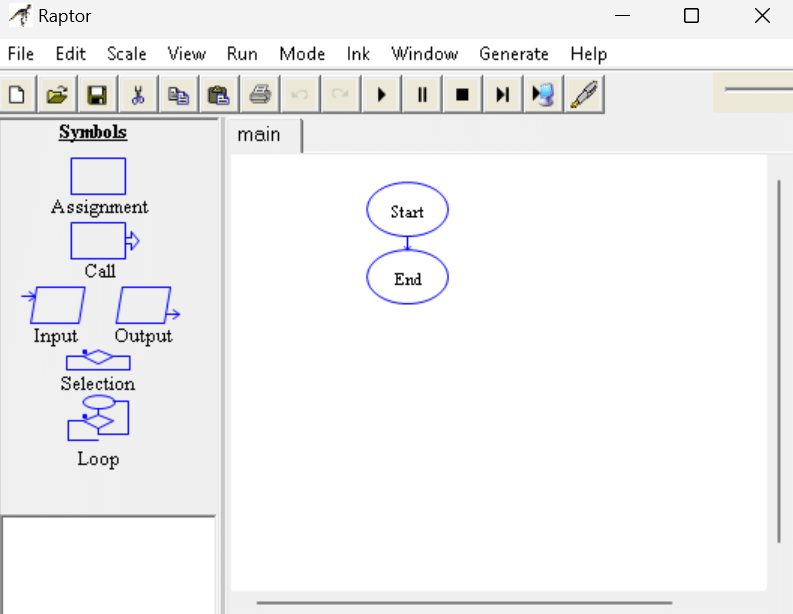Software Development Exam > Software Development Notes > Basics of Python > Getting Started With Raptor
Getting Started With Raptor | Basics of Python - Software Development PDF Download
RAPTOR: Introduction and Installation
Introduction
RAPTOR (Rapid Algorithmic Prototyping Tool for Ordered Reasoning) is a flowchart-based programming tool designed for beginners. This guide will walk you through the installation process step by step.
Learning Objectives
By the end of this chapter, you will be able to:
- Understand the system requirements for RAPTOR.
- Download the RAPTOR software from the official source.
- Install and set up RAPTOR on your computer.
- Verify the installation to ensure proper functionality.
How to install RAPTOR?
Step 1: Checking System Requirements
Before installing RAPTOR, ensure your computer meets the following requirements:
- Operating System: Windows 7, 8, 10, or later
- Processor: 1 GHz or faster
- RAM: Minimum 1 GB (2 GB recommended)
- Storage: At least 50 MB of free space
- .NET Framework: RAPTOR requires Microsoft .NET Framework 4.0 or later
Step 2: Downloading RAPTOR
- Visit the official RAPTOR website: [https://raptor.martincarlisle.com/]
- Locate the latest version available for download.
- Click on the download link and save the installation file to your computer.

Step 3: Installing RAPTOR
- Locate the downloaded RAPTOR installer file (usually in your ‘Downloads’ folder).
- Double-click the file to start the installation process.
- Follow the on-screen instructions to proceed with the installation:
- Accept the terms and conditions.
- Choose an installation location (default is recommended).
- Click ‘Install’ and wait for the process to complete.


Step 4: Verifying Installation
- Once installed, open RAPTOR from the Start Menu or Desktop shortcut.
- Ensure the application launches without errors.
- Open a sample flowchart to test the software’s functionality.

Troubleshooting Tips
- If the installation fails, ensure that .NET Framework 4.0 or later is installed.
- Run the installer as an administrator if you encounter permission issues.
- Restart your computer and try again if installation stalls.
The document Getting Started With Raptor | Basics of Python - Software Development is a part of the Software Development Course Basics of Python.
All you need of Software Development at this link: Software Development
|
54 videos|65 docs|18 tests
|
FAQs on Getting Started With Raptor - Basics of Python - Software Development
| 1. What is RAPTOR and what is its primary purpose? |  |
Ans. RAPTOR (Rapid Algorithmic Prototyping Tool for Ordered Reasoning) is a visual programming environment designed primarily for educational purposes. It allows users to create flowcharts that represent algorithms, making it easier to understand programming concepts without needing to write traditional code. This tool is especially beneficial for beginners and those who want to develop their logic and problem-solving skills in programming.
| 2. How do I install RAPTOR on my computer? |  |
Ans. To install RAPTOR, you need to visit the official RAPTOR website and download the installation package that corresponds to your operating system (Windows or macOS). After downloading, run the installer and follow the on-screen instructions to complete the installation. Ensure that you have administrative rights on your computer, as this may be required for the installation process.
| 3. Is RAPTOR free to use, and are there any licensing issues? |  |
Ans. Yes, RAPTOR is free to use. It is an open-source tool, which means that anyone can download, install, and use it without any licensing fees. However, it is always a good practice to check the official website for any updates regarding usage rights or changes in licensing policies.
| 4. What are the system requirements for running RAPTOR? |  |
Ans. The system requirements for running RAPTOR typically include a Windows operating system (Windows 7 or later) or macOS (version 10.6 or later). A minimum of 1 GB of RAM and a few hundred megabytes of free disk space are generally required. Additionally, a modern web browser may be needed for accessing online resources and documentation.
| 5. Can RAPTOR be used for programming languages other than flowcharts? |  |
Ans. While RAPTOR is primarily focused on creating flowcharts to represent algorithms, it does not directly support programming languages like Python or Java. However, the flowcharts created in RAPTOR can be used as a conceptual tool to understand and translate algorithms into code in various programming languages. This makes RAPTOR a valuable educational resource for grasping the fundamentals of programming logic.
Related Searches
















